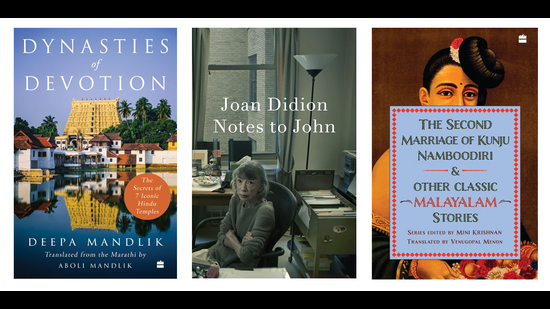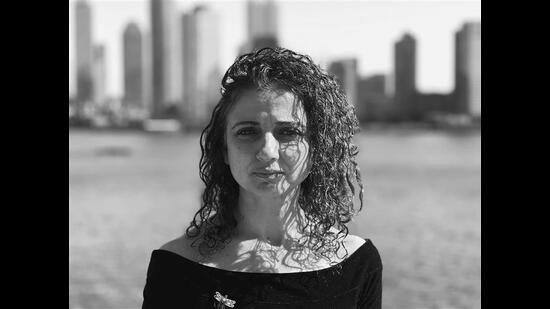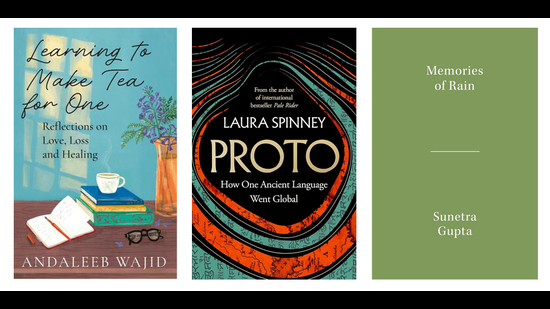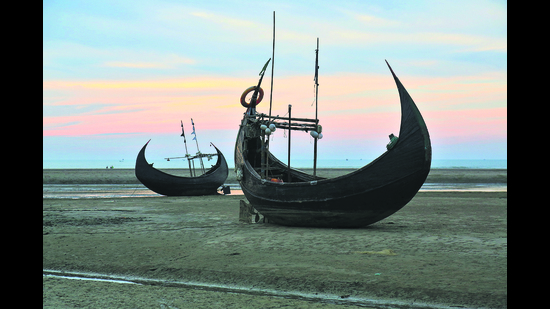QUICKREADS

What a wonderful world: Jazz in New Orleans
New Orleans, birthplace of jazz, showcases musical heritage at the Jazz Museum. With 30,000 artifacts, exhibits trace the genre's evolution from African roots to global influence, featuring legends like Louis Armstrong and interactive displays celebrating the city's rich musical culture.

HT Picks; New Reads
Deepa Mandlik's "Dynasties of Devotion" explores India's temple culture, revealing ancient temples as social and cultural centers. The book examines historical contexts, mythological stories, and architectural marvels across seven temples in India and Cambodia, highlighting their spiritual and artistic significance.

Katy Hessel: “Everyone has to own their identity”
Katy Hessel champions women artists' visibility, critiquing historical art world erasure. She wrote "The Story of Art Without Men" to highlight overlooked female artists, challenging institutional biases and advocating for diverse representation in art across different mediums and identities.

Review: Heart Lamp by Banu Mushtaq
Banu Mushtaq's short story collection explores Muslim women's experiences in south India, challenging patriarchal norms through powerful narratives of suppression, resilience, and subtle resistance, revealing complex family dynamics and personal struggles with empathy and nuanced storytelling.

Review: Embracing Hope by Viktor E Frankl
Viktor E Frankl's book explores finding meaning amid adversity, drawing from his Holocaust experiences. He emphasizes choosing one's attitude, discovering purpose through work, love, and suffering, and maintaining hope despite challenging circumstances.

On the emerging generation of Hindi women writers
A new generation of Hindi women writers like Divya Vijay, Baabusha Kohli, and Vineeta Asthana are transforming the literary landscape, bringing fresh perspectives on female experiences, challenging patriarchal norms, and exploring diverse narratives through innovative storytelling techniques.

Review: The Many Worlds of Philipsborn: Jamia’s Aapa Jaan
A Jewish woman from Germany, Gerda Philipsborn dedicated her life to Jamia Millia Islamia from 1932-1943, embodying interfaith unity and commitment to educational ideals during India's freedom movement, transcending cultural and religious boundaries.

Report: Ragas by the River 2025
A three-day music festival, Ragas by the River 2025, took place at Jim Corbett National Park, featuring renowned classical musicians like Shubha Mudgal, Purbayan Chatterjee, and Papon. 500 attendees enjoyed performances, diverse cuisines, and cultural experiences by the Kosi river.

Ibtisam Azem: “The reality that Palestinians live in goes beyond any dystopia”
Ibtisam Azem's novel explores Palestinian displacement, colonial trauma, and memory through characters Alaa and Ariel. It examines the Nakba's lasting impact, highlighting Palestinian narratives of loss, resistance, and survival against systemic erasure.

Barnali Chattopadhyay: “When I sing Sufiana kalaam, I forget my gender”
Renowned vocalist Barnali Chattopadhyay explores Amir Khusrau's Sufi poetry, emphasizing spiritual connection, devotional depth, and transcending gender through music. She values authentic musical expression and guru-shishya tradition, viewing music as a profound spiritual practice.

HT Picks; New Reads
Andaleeb Wajid's memoir chronicles her devastating loss during COVID-19's second wave, exploring grief through personal narrative. She navigates the pain of losing her husband and mother-in-law, finding solace in writing and learning to live with absence.

Abhay K: “Nalanda was an international melting pot where scholars flocked”
Nalanda Mahavihara was an ancient Buddhist university that attracted international scholars, teaching diverse subjects from philosophy to astronomy. It flourished from the 4th to 14th centuries, nurturing intellectual exchange before its decline due to foreign invasions and reduced royal patronage.

Review: The Company of Violent Men by Siddharthya Roy
In this book review, Siddharthya Roy explores journalism's complexities through unconventional stories about conflict zones, revealing how media narratives often oversimplify complex human experiences while challenging preconceived notions about violence, identity, and reporting.

The dynasty of the living dead
A royal family descended from Awadh's nawab lived in a dilapidated Delhi lodge without electricity, claiming ancestral rights. After decades of isolation, they died in obscurity, symbolizing the traumatic aftermath of Partition and complex identities that fell through societal cracks.

Creativity, censorship and clever camouflage
During colonial India, playwrights used mythological plays to camouflage nationalist messages, circumventing censorship laws. By embedding revolutionary themes in epic stories, writers like Radheyshyam Kathavachak and Subramanya Bharatiyar ingeniously protested British rule through theater.






